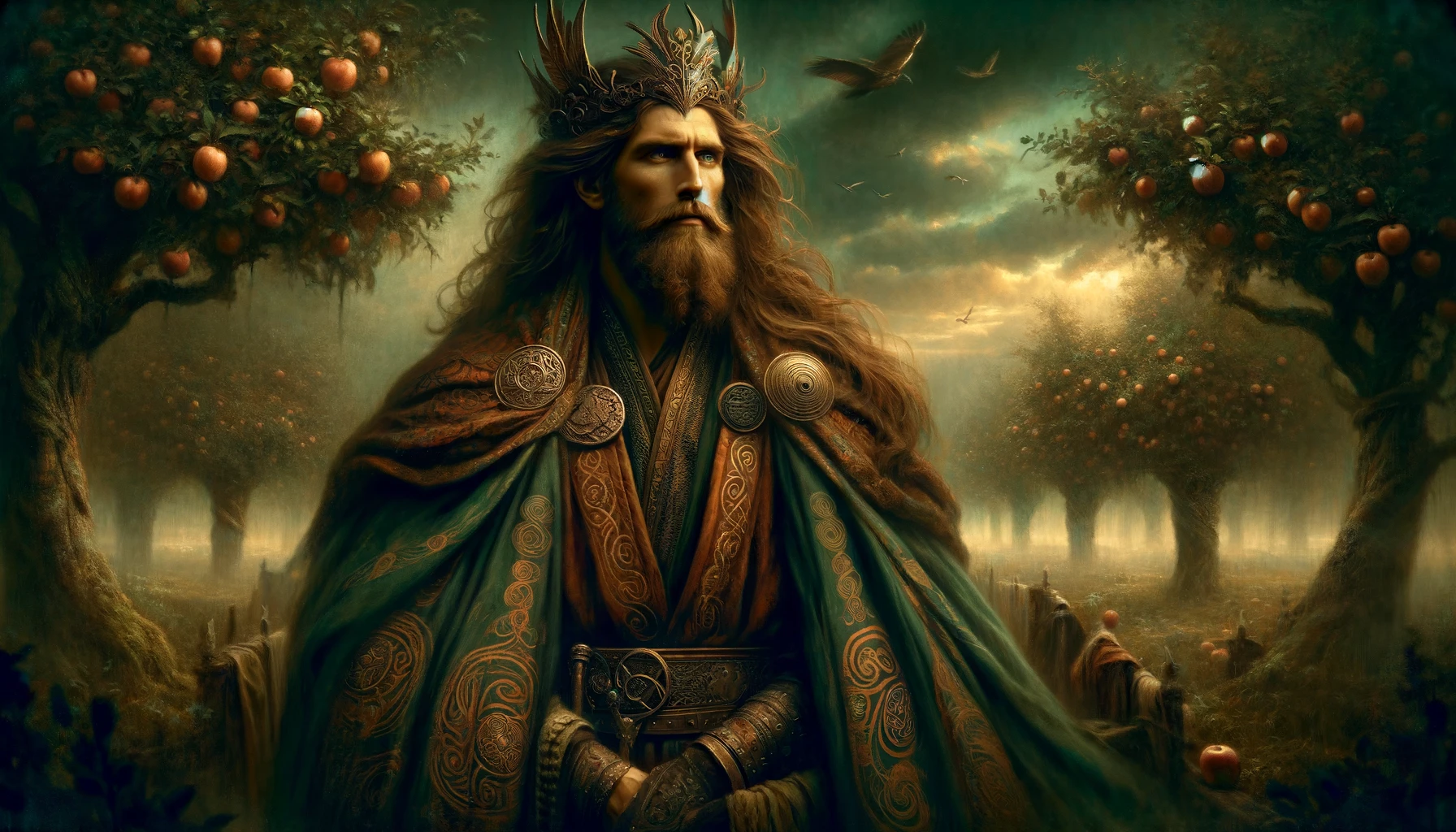Afallach, historically referenced as Aballac in Old Welsh. One prominent aspect of his mythological narrative is his identification as the father of the goddess Modron, as mentioned in a medieval Welsh triad. This connection highlights his significance in Welsh mythology.
Three Fair Womb-Burdens of the Island of Britain:
The Welsh Triads
Urien son of Cynfarch and Arawn son of Cynfarch and Lleu son of Cynfarch, by Nefyn daughter of Brychan Brycheiniog their mother;
The second, Owein son of Urien and Mor(fudd) his sister who were carried together in the womb of Modron daughter of Afallach;
The third, Gwrgi and Peredur and Ceindrech Pen Asgell (‘Wing Head’), children of Eliffer and the Great Warband, who were carried together in the womb of Efrddyl daughter of Cynfarch their mother.
In the Welsh adaptations of Geoffrey of Monmouth’s “Historia Regum Britanniae,” particularly in the “Brut y Brenhinedd,” Afallach is linked with Ynys Afallach, a name that replaces Geoffrey’s Insula Avalonsis (Island of Avalon).
This association, however, is generally considered a product of medieval etymological creativity rather than historical fact. It is more plausible that Afallach’s name derives from the Welsh word “afall” (meaning “apple tree”; in modern Welsh, “afal” is “apple”, and “afallen” is “apple tree”), which parallels the Proto-Celtic *aballo- (“apple”). Interestingly, the name of Avalon is also often thought to originate from similar etymological roots, suggesting a conceptual but not necessarily direct connection between Afallach and Avalon.
In the tale of Urien and Modron, Afallach is referred to by his daughter as the King of Annwn, which positions him within the realm of the otherworld in Welsh mythology. This detail leads to speculation that he might have originally been associated or even cognate with Arawn or Gwyn, both of whom are significant figures in Welsh lore related to the otherworld. It’s hypothesized that Afallach, Arawn, and Gwyn might have been regional variants of the same deity in different parts of Wales, reflecting the diverse and rich tapestry of Welsh mythological traditions.
